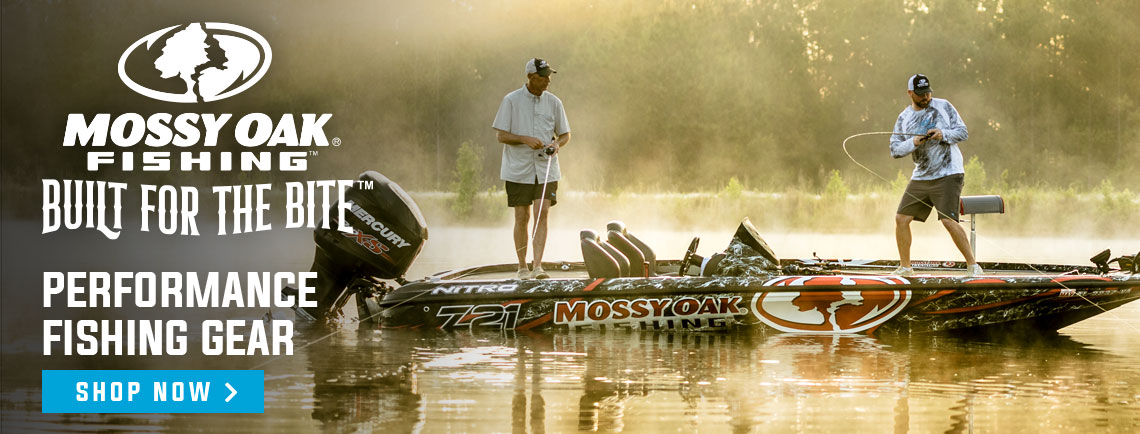Phillip Gentry
Even though land-locked striped bass are well known for their love of cold weather and cold water, wintertime conditions that present water temperatures in the 40s often have the effect of reducing the fish’s metabolism to the point of reduced feeding and overall sluggish behavior.
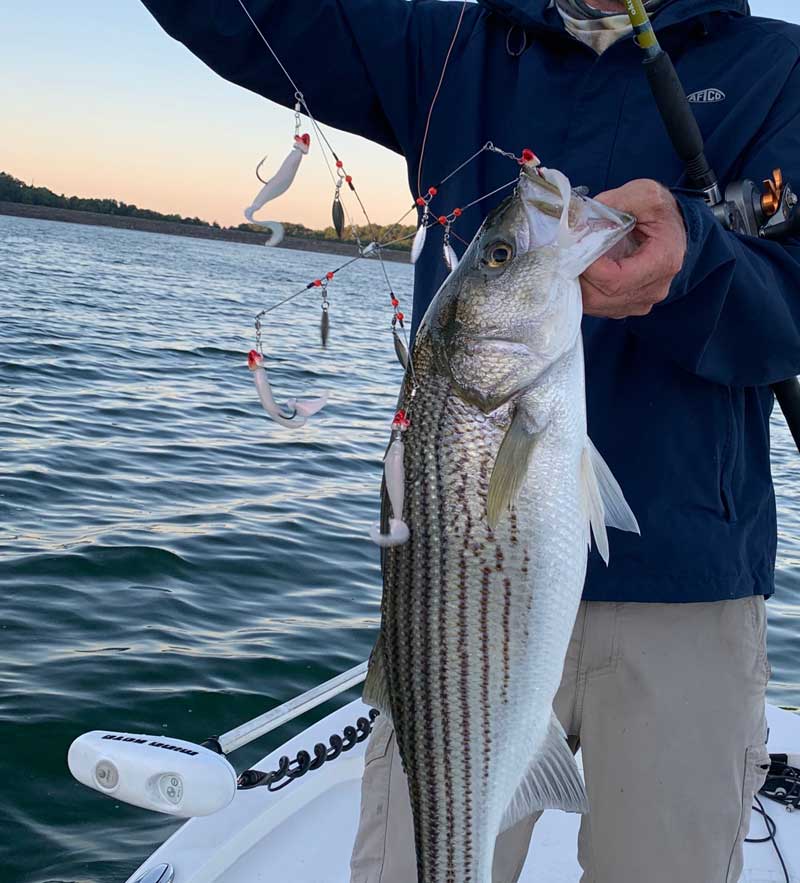
WATCH NEXT: Bass Fishing in 40-Degree Water
One of the best ways to combat lethargic stripers in cold water is to troll umbrella rigs for them. In recent years, down-sized versions of umbrella rigs, also referred to as Alabama rigs, have flooded the market among bass anglers who sometimes also cast for striped bass in waters where the two fish are found together.
Trolling full sized umbrella rigs is a serious and deadly tactic, especially when targeting trophy sized striped bass in inland freshwater impoundments. Experienced anglers often troll multiple rigs, using one or two on each side of the boat.
An umbrella rig can be best described by comparing it to a child’s mobile. Wire spreader arms make up the main supports of the rig with baits connected at even intervals to the arms and suspended by wire or monofilament leaders. Baits can be equipped with hooks for catching fish or used without to act as teasers for the hooked baits.
Typical setup for an umbrella rig is to space baits at the ends of the spreader arms on a short leader. Baits midway down the arms are spaced on a shorter leader and the center trailing bait is spaced on bit longer leader. If regulations on your waters only allow one bait to be hooked, the center bait is the best choice. Leaders should be made of stout mono line or crimped steel leader.
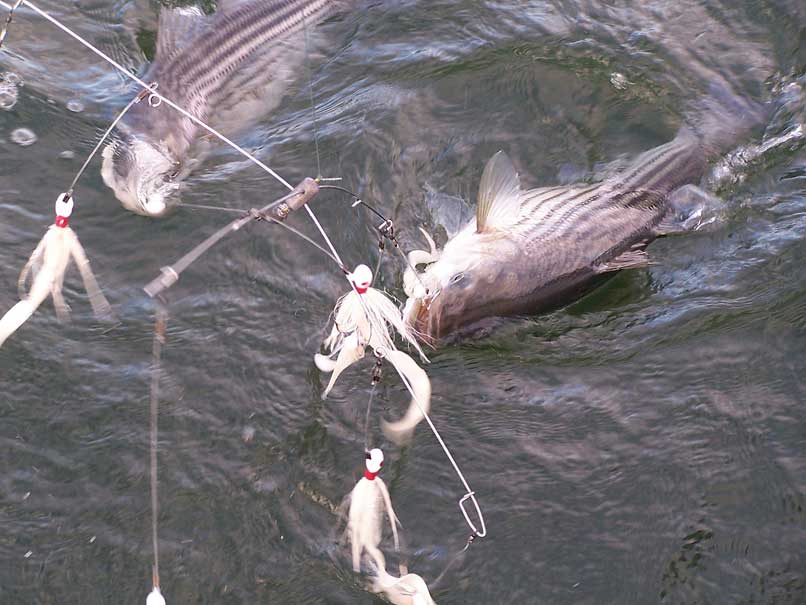
The umbrella rig is trolled on average between 50 to 75 feet behind the boat. Line angle and target depth will determine the necessary line out distance. Allow space between the rig and the bottom to prevent hang ups and to allow the rig to pass above, rather than below the fish.
Strikes occur out of instinct rather than feeding. It is for this reason that umbrella rigs are a go-to tool for targeting neutral or negative mood fish especially after a strong frontal system.
Once you have the umbrella rig properly deployed, watch your sonar unit continuously. Because the rig is a great distance behind the boat, you’ll have time to react to any obstruction or shallow water you may see on the sonar. When your sonar unit shows something that is shallower than the depth of your rigs, you can avoid a very high percentage of your snags by one of several methods. The first is to simply increase your speed; this will lift the baits up and over the obstruction. Don’t be timid with this approach, increase your speed to 7 to 10 MPH or if you are using the tachometer, tach up to 1200 to 1400.
When the potential snag is clear, throttle down to trolling speed and the rigs will fall back into the targeted depth. In addition to avoiding the snag, this can be a good way to prompt a strike. It is very common to hook a fish as you pull the rig over the obstruction or as you slow the boat down to trolling speed. Often the strike will occur as the rig settles back to the intended depth.
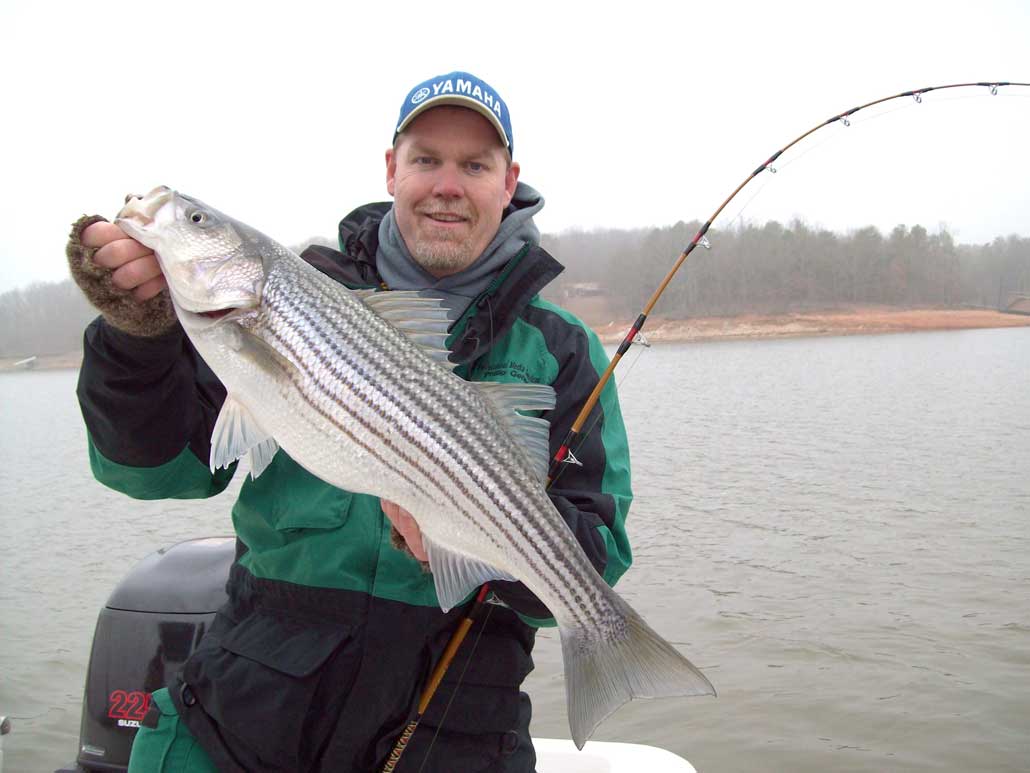
Other things to remember when pulling umbrella rigs are to keep the boat in gear and moving when a fish is on the line. Never pump a rod when fighting a fish on an umbrella rig as the substantial amount of weight comprising the rig acts a hook remover when dropped straight off the nose of the fish.
Keep the rod tip high and steadily reel the rig to the boat. Trolling speeds vary from 2 mph on the low end up to 8 mph on the high. Varying motor rpms lets the rig accelerate like a pod of bait fleeing and then drop as the gas is let off, causing the baits to flutter toward the bottom. This tactic is also useful for clearing underwater obstructions such as stumps or standing timber to prevent hang ups and entice strikes from stripers that may be holding near this structure.
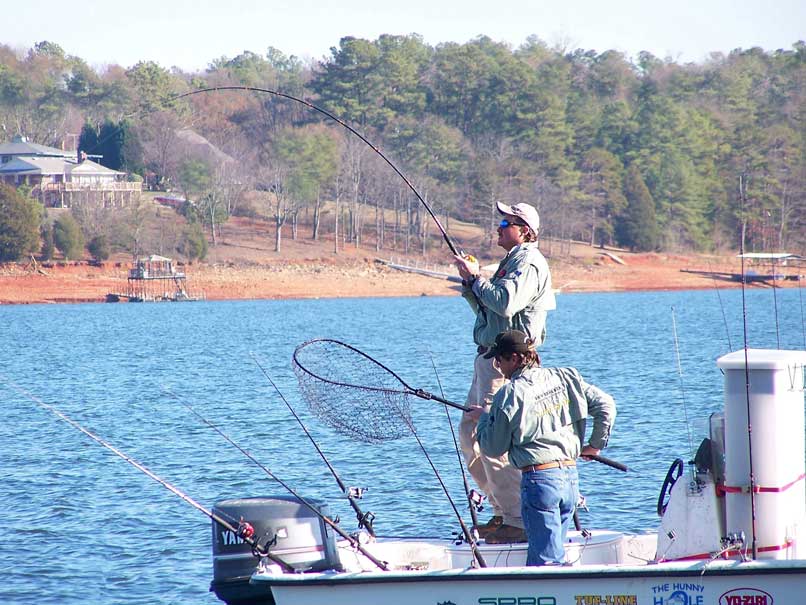
The biggest hesitation in most striper anglers for trolling the rig is the aspect of getting snagged. There are a few simple rules that will help you avoid most of your snags. For starters, when you are putting the rig into the water, make sure your boat is moving pretty briskly, 4 or 5 miles per hour, and thumb your reel while you are feeding out the line. Otherwise, the rig will be going down, not out, and will find the bottom quickly. Once you have the umbrella out to the necessary distance, slow the boat to trolling speed, roughly 2.5 mph.
The wind is another variable that you should always consider while you are trolling. A good stiff breeze can affect boat speed, which in turns affects the depth of the umbrella. As you troll into the wind, be sure to increase the boat speed enough to maintain the necessary depth. Also, anytime you turn the boat, increase your speed. As the boat turns, your inside rigs will run deeper. Giving the motor a little extra gas in the turns will keep the rig at the right depth and out of any obstructions.

